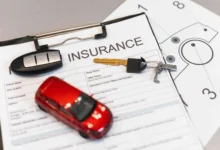Car Insurance Comparison: Find the Best Deal
Car insurance comparison is crucial for securing the best coverage at the most affordable price. Navigating the complexities of insurance policies can be daunting, but understanding the different types of coverage, factors influencing premiums, and effective comparison strategies empowers consumers to make informed decisions. This guide provides a comprehensive overview, equipping you with the knowledge to confidently compare car insurance options and find the perfect fit for your needs and budget.
From liability and collision coverage to discounts and savings opportunities, we’ll explore every aspect of car insurance comparison. We’ll delve into how driving history, car type, location, and age impact premiums, offering practical tips for negotiating lower rates and utilizing online comparison tools. By the end, you’ll be prepared to confidently select a policy that provides adequate protection without breaking the bank.
Understanding Car Insurance Basics
Choosing the right car insurance can feel overwhelming, but understanding the fundamentals simplifies the process. This section breaks down the key aspects of car insurance, helping you make informed decisions to protect yourself and your vehicle.
Types of Car Insurance Coverage
Car insurance policies typically offer a range of coverage options, each designed to protect you against different types of losses. Understanding these options is crucial for choosing a policy that meets your specific needs and budget. Common types of coverage include liability, collision, comprehensive, uninsured/underinsured motorist, and medical payments. Liability coverage protects you financially if you cause an accident that injures someone or damages their property. Collision coverage pays for repairs to your vehicle if it’s damaged in an accident, regardless of fault. Comprehensive coverage protects against damage to your vehicle caused by events other than collisions, such as theft, vandalism, or weather-related incidents. Uninsured/underinsured motorist coverage protects you if you’re involved in an accident with a driver who lacks sufficient insurance or is uninsured. Medical payments coverage helps pay for medical expenses for you and your passengers, regardless of fault.
Factors Influencing Car Insurance Premiums
Several factors contribute to the cost of your car insurance premiums. Insurers assess risk to determine pricing, and these factors help them gauge that risk. These factors include your driving record (accidents, tickets), your age and driving experience, your vehicle’s make, model, and year (some cars are more expensive to repair), your location (accident rates vary geographically), your credit score (in some states), and the amount and type of coverage you choose (higher coverage levels generally mean higher premiums). For example, a young driver with a history of speeding tickets will likely pay more than an older driver with a clean record.
Common Insurance Terms and Jargon
Navigating the world of car insurance often involves encountering specialized terminology. Familiarizing yourself with these terms will help you understand your policy and communicate effectively with your insurer. Here are a few examples: Premium: The amount you pay regularly for your insurance coverage. Deductible: The amount you pay out-of-pocket before your insurance coverage kicks in. Claim: A formal request for your insurance company to cover a loss. Policy: The contract outlining your coverage details. Liability Limits: The maximum amount your insurance will pay for damages caused by an accident. For example, a 100/300/100 liability limit means $100,000 per person injured, $300,000 total per accident, and $100,000 for property damage.
Comparison of Liability, Collision, and Comprehensive Coverage
| Coverage Type | What it Covers | Who Pays | Example |
|---|---|---|---|
| Liability | Damages to others’ property or injuries to others caused by you | Your insurance | You hit another car, your insurance pays for their repairs and medical bills. |
| Collision | Damage to your vehicle in an accident, regardless of fault | Your insurance | You hit a tree, your insurance pays for your car repairs, minus your deductible. |
| Comprehensive | Damage to your vehicle from non-collision events (theft, vandalism, weather) | Your insurance | Your car is stolen, your insurance pays for its replacement or repair, minus your deductible. |
Comparison Shopping Strategies
Finding the best car insurance can feel overwhelming, but a strategic approach simplifies the process. Effective comparison shopping involves understanding your needs, utilizing available tools, and negotiating effectively. This section outlines key strategies to help you secure the most suitable and affordable car insurance policy.
Effective Methods for Comparing Car Insurance Quotes
Comparing car insurance quotes requires a systematic approach. Don’t just look at the price; consider the coverage offered. Begin by gathering quotes from multiple insurers, both online and offline. Use online comparison websites to quickly obtain several quotes simultaneously. However, remember that these websites may not include every insurer in your area. Supplement online searches by contacting insurers directly, especially smaller, regional companies that may offer competitive rates. Remember to provide consistent information across all quotes to ensure accurate comparisons.
Key Features to Prioritize When Selecting a Policy
Choosing the right policy depends on your individual circumstances and risk tolerance. Liability coverage is crucial, protecting you financially if you cause an accident. Collision and comprehensive coverage protect your vehicle, but they are often optional and can significantly impact your premium. Consider your car’s value and your financial capacity when deciding on these coverages. Uninsured/underinsured motorist coverage is also vital, providing protection if you’re involved in an accident with a driver who lacks sufficient insurance. Finally, review the policy’s deductibles and limits carefully. A higher deductible generally means lower premiums, but it also means you’ll pay more out-of-pocket in the event of a claim.
Tips for Negotiating Lower Premiums with Insurance Providers
Negotiating your car insurance premium is possible, and often yields positive results. First, shop around and obtain multiple quotes. This provides leverage when discussing rates with your current provider. Highlight your clean driving record and any safety features in your vehicle, such as anti-theft devices or advanced driver-assistance systems. Consider bundling your car insurance with other policies, such as homeowners or renters insurance, to potentially receive a discount. Finally, inquire about discounts for safe driving programs, defensive driving courses, or loyalty programs. Remember to be polite and professional during negotiations; a positive attitude can often make a difference.
Step-by-Step Guide for Using Online Comparison Tools
Using online comparison tools streamlines the quote-gathering process. First, select a reputable comparison website; read reviews and ensure the site is secure. Next, enter your personal information accurately and completely; inconsistencies can lead to inaccurate quotes. Specify your vehicle details, including make, model, year, and mileage. Choose your desired coverage levels and deductibles. Once you submit your information, the website will generate a list of quotes from various insurers. Carefully review each quote, paying close attention to the coverage details and exclusions. Finally, compare the quotes based on price, coverage, and the insurer’s reputation before making a decision.
Factors Affecting Insurance Costs
Several key factors influence the cost of your car insurance premium. Understanding these factors can help you make informed decisions and potentially save money. This section will explore the impact of driving history, vehicle type, location, and age on your insurance rates.
Driving History’s Impact on Insurance Rates
Your driving record significantly affects your insurance premiums. A clean driving history, free of accidents and traffic violations, generally results in lower rates. Conversely, accidents, speeding tickets, and DUI convictions can lead to substantially higher premiums. Insurance companies view these incidents as indicators of higher risk, justifying increased costs to compensate for potential future claims. For example, a single at-fault accident might increase your premium by 20-40%, while multiple offenses can result in even steeper increases or policy cancellations. The severity of the accident also plays a role; a minor fender bender will have less impact than a serious collision. Maintaining a clean driving record is crucial for keeping your insurance costs manageable.
Insurance Costs Associated with Different Car Types and Models
The type and model of your car significantly influence insurance premiums. Factors considered include the vehicle’s safety features, repair costs, theft rate, and its overall value. Luxury vehicles and sports cars, often with higher repair costs and greater potential for theft, typically command higher insurance premiums than more economical models. Vehicles with advanced safety features, such as anti-lock brakes, airbags, and electronic stability control, may qualify for discounts as they are statistically associated with fewer accidents. For instance, a new, high-performance sports car will likely be more expensive to insure than a used, fuel-efficient sedan. The insurance company considers the probability of claims and the cost of repairs when setting premiums.
Influence of Location and Demographics on Premiums
Your location and demographic information also play a role in determining your insurance rates. Areas with higher crime rates and more frequent accidents generally have higher insurance premiums due to the increased risk of claims. Similarly, demographic factors such as age and gender can influence rates. Younger drivers, statistically more prone to accidents, often face higher premiums than older, more experienced drivers. Insurance companies utilize extensive data analysis to identify risk factors associated with specific geographic locations and demographic groups. For example, urban areas with high traffic density might have higher rates compared to rural areas with lower traffic volume.
Age and Insurance Costs
The relationship between age and insurance costs is generally inverse, at least during the early driving years. Younger drivers tend to pay more due to higher accident rates. As drivers gain experience and a clean driving record, their premiums typically decrease. However, premiums may increase again in later years, due to factors like decreased reaction time and increased health concerns.
| Age Range | Average Annual Premium (Example) | Reason for Premium Level | Note |
|---|---|---|---|
| 16-25 | $2000 | Higher accident risk, lack of experience | Significant variation based on driving record |
| 26-35 | $1500 | Improved driving experience, fewer accidents | Rates continue to decline |
| 36-55 | $1200 | Established driving record, fewer claims | Lowest premium range |
| 56+ | $1500 | Increased risk due to age-related factors | Rates begin to increase again |
Reading and Interpreting Insurance Policies
Understanding your car insurance policy isn’t just about ticking a box; it’s about safeguarding your financial well-being in the event of an accident or unforeseen circumstance. A thorough understanding of your policy’s terms and conditions ensures you’re adequately covered and can confidently navigate any claims process. Failing to do so could leave you vulnerable to unexpected costs and legal complications.
Policy documents, while often dense and technical, are crucial for understanding your coverage. They clearly outline the agreement between you and your insurer, detailing what is covered, what is excluded, and the limits of your liability. This knowledge empowers you to make informed decisions about your coverage and avoid potential disputes later.
Key Clauses and Exclusions
Identifying key clauses and exclusions requires careful reading and attention to detail. Look for sections defining covered perils (events that trigger coverage), such as collisions, theft, or fire. Pay close attention to the limits of liability, which specify the maximum amount your insurer will pay for a particular claim (e.g., bodily injury liability, property damage liability). Exclusions, conversely, outline situations or damages not covered by your policy. Common exclusions might include damage caused by wear and tear, intentional acts, or driving under the influence. Understanding these limitations is critical in assessing the adequacy of your coverage. For example, a policy might exclude coverage for damage caused by driving a vehicle not listed on the policy.
Comparing Policy Details Across Providers
When comparing policies, focus on a standardized approach. Create a comparison table listing key aspects like coverage limits for liability, collision, and comprehensive; deductibles; premiums; and any additional benefits or riders. This allows for a clear side-by-side comparison, making it easier to identify the best value for your needs. For example, compare a policy with a $500 deductible and a $100,000 liability limit against another with a $1,000 deductible and a $250,000 liability limit. Consider not only the price but also the extent of the coverage provided.
Identifying Potential Areas of Risk or Insufficient Coverage
Reviewing your policy for potential gaps in coverage is essential. Consider your individual circumstances, such as the value of your vehicle, your driving habits, and your location. If you frequently drive in high-risk areas, you might need higher liability limits. If you own a high-value vehicle, you might want to consider additional coverage options like gap insurance. Insufficient coverage could leave you financially responsible for significant costs in the event of an accident. For example, underinsured/uninsured motorist coverage protects you if you’re involved in an accident with a driver who lacks sufficient or any insurance. Assess your lifestyle and driving habits to determine if your current policy accurately reflects your risk profile.
Discounts and Savings Opportunities
Saving money on car insurance is a priority for most drivers. Fortunately, numerous discounts and strategies exist to help lower your premiums. Understanding these opportunities and actively pursuing them can significantly reduce your annual insurance costs. This section details common discounts, the advantages of bundling policies, and effective strategies for securing the best rates.
Common Car Insurance Discounts
Many insurance companies offer a variety of discounts to incentivize safe driving habits and responsible vehicle ownership. These discounts can significantly reduce your premiums, sometimes by hundreds of dollars annually. Eligibility criteria vary by insurer, so it’s crucial to check with your provider directly.
- Good Driver Discount: Awarded to drivers with clean driving records, typically free of accidents and traffic violations for a specified period (e.g., three to five years).
- Safe Driver Discount (Telematics): Based on your actual driving behavior, tracked through a telematics device or smartphone app. Discounts are earned by demonstrating safe driving habits such as maintaining steady speeds and avoiding harsh braking or acceleration.
- Multi-Car Discount: Offered when insuring multiple vehicles under the same policy with the same insurer.
- Multi-Policy Discount (Bundling): A substantial discount for bundling home and auto insurance with the same company. This is often one of the most significant discounts available.
- Good Student Discount: Available to students who maintain a certain grade point average (GPA) or are enrolled in a merit-based program.
- Defensive Driving Course Discount: Completing a state-approved defensive driving course can demonstrate your commitment to safe driving and often results in a premium reduction.
- Vehicle Safety Features Discount: Discounts are frequently offered for vehicles equipped with advanced safety features like anti-lock brakes (ABS), airbags, and electronic stability control (ESC).
- Anti-theft Device Discount: Installing anti-theft devices, such as alarms or immobilizers, can significantly reduce your risk of theft and thus your premium.
Bundling Home and Auto Insurance
Bundling your home and auto insurance with the same provider often leads to substantial savings. Insurance companies reward loyalty and streamline administration by offering a bundled discount, which can be considerably higher than individual discounts. This is because the insurer reduces its administrative overhead and risk assessment costs. For example, a family might save 15-25% or more by bundling their home and auto policies compared to purchasing them separately.
Strategies for Securing the Best Insurance Rates
Obtaining the best possible car insurance rates involves a proactive approach. Regularly comparing quotes from multiple insurers, maintaining a clean driving record, and understanding the factors that affect your premiums are crucial.
- Shop Around Regularly: Insurance rates fluctuate, so it’s beneficial to compare quotes from different insurers annually or even semi-annually to ensure you’re getting the best deal.
- Maintain a Clean Driving Record: Avoiding accidents and traffic violations is paramount in keeping your premiums low. Even minor infractions can lead to significant increases.
- Increase Your Deductible: Choosing a higher deductible can lower your premiums, but it’s crucial to ensure you can afford the out-of-pocket expense in case of an accident.
- Consider Your Coverage Limits: Evaluate your coverage needs carefully. While comprehensive coverage offers greater protection, it typically comes with higher premiums. Carefully consider your risk tolerance and financial situation when choosing coverage limits.
- Explore Different Payment Options: Some insurers offer discounts for paying premiums annually or semi-annually instead of monthly.
Ways to Reduce Insurance Premiums
Several actions can contribute to lower insurance premiums. These strategies often involve demonstrating responsible behavior and minimizing risk.
- Maintain a good credit score. Many insurers consider credit history when determining premiums.
- Choose a less expensive car. The make, model, and year of your vehicle significantly influence insurance costs.
- Keep your car in a secure location, such as a garage, to reduce the risk of theft or damage.
- Drive less frequently. Lower annual mileage can often translate to lower premiums.
Illustrative Examples of Comparison Scenarios
Understanding the nuances of car insurance quotes requires careful examination of several factors. This section provides concrete examples to illustrate how comparing different policies can significantly impact your costs and coverage. We’ll analyze hypothetical scenarios to highlight the importance of thorough comparison shopping.
Comparing Quotes from Three Insurance Companies
Let’s consider a hypothetical driver, Sarah, a 30-year-old with a clean driving record, driving a 2018 Honda Civic in a medium-risk city. She requests quotes from three different insurers: Company A, Company B, and Company C. Each company offers a similar level of liability coverage ($100,000/$300,000 bodily injury and $50,000 property damage), but their comprehensive and collision coverage, as well as their premiums, differ significantly.
Company A offers a comprehensive and collision policy with a $500 deductible for $1,200 annually. Company B provides similar coverage but with a $1,000 deductible for $1,000 annually. Company C offers the same coverage with a $250 deductible for $1,400 annually. The difference in deductibles directly affects the out-of-pocket expenses Sarah would face in the event of an accident. Choosing Company B, despite having a higher deductible, might save her money annually. However, a higher deductible would mean higher out-of-pocket expenses in the event of a claim.
Coverage and Cost Differences Between Two Sample Policies
Consider two policies, Policy X and Policy Y, both offering liability coverage of $100,000/$300,000. Policy X, offered by Company D, includes comprehensive and collision coverage with a $500 deductible for $1,100 annually. It also includes roadside assistance and rental car reimbursement. Policy Y, from Company E, offers the same liability coverage but only includes collision coverage with a $1,000 deductible for $800 annually. It does not include roadside assistance or rental car reimbursement.
The difference in cost is $300 annually. However, Policy X provides significantly broader coverage, including protection against damage from events like hail or theft (comprehensive coverage), and provides additional benefits like roadside assistance and rental car reimbursement. Policy Y, while cheaper, leaves Sarah vulnerable to higher out-of-pocket expenses in the event of a non-collision accident and lacks additional benefits. The choice depends on Sarah’s risk tolerance and priorities.
Comparison of Two Insurance Plans: Benefits and Drawbacks
Let’s visualize a comparison of Policy X and Policy Y using a text-based table:
| Feature | Policy X (Company D) | Policy Y (Company E) |
|---|---|---|
| Annual Premium | $1100 | $800 |
| Liability Coverage | $100,000/$300,000 | $100,000/$300,000 |
| Collision Coverage | Yes, $500 deductible | Yes, $1000 deductible |
| Comprehensive Coverage | Yes | No |
| Roadside Assistance | Yes | No |
| Rental Car Reimbursement | Yes | No |
Policy X offers more comprehensive coverage and additional benefits, but at a higher cost. It’s suitable for drivers who prioritize peace of mind and want broader protection.
Policy Y is more affordable but offers less comprehensive coverage. It’s a suitable option for drivers with a lower risk tolerance and a tighter budget, who are willing to accept a higher deductible and forego additional benefits.
Choosing the Right Coverage
Selecting the appropriate car insurance coverage is crucial; it balances financial protection with affordability. Understanding the different coverage levels and their implications is key to making an informed decision that aligns with your individual needs and risk tolerance. Choosing insufficient coverage could leave you financially vulnerable in an accident, while overspending on unnecessary coverage represents wasted money.
Coverage Levels and Their Benefits
Different coverage levels offer varying degrees of protection. Liability coverage protects you financially if you cause an accident resulting in injury or property damage to others. Collision coverage repairs or replaces your vehicle if it’s damaged in an accident, regardless of fault. Comprehensive coverage protects against damage from events other than collisions, such as theft, vandalism, or weather-related incidents. Uninsured/underinsured motorist coverage protects you if you’re involved in an accident with a driver who lacks sufficient insurance. Medical payments coverage helps pay for medical bills resulting from an accident, regardless of fault. Personal injury protection (PIP) covers medical expenses and lost wages for you and your passengers, regardless of fault.
Implications of Inadequate or Excessive Coverage
Inadequate coverage can leave you with substantial out-of-pocket expenses after an accident, potentially impacting your finances significantly. For example, if you only carry minimum liability coverage and cause a serious accident resulting in high medical bills for the other party, you could face financial ruin. Conversely, excessive coverage represents an unnecessary expense. Paying for high coverage limits you’re unlikely to need is simply wasting money that could be better allocated elsewhere. Consider the likelihood of needing high coverage limits based on your driving habits, location, and the value of your vehicle.
Determining Appropriate Coverage Based on Individual Needs
Determining the right coverage involves assessing several factors. Your vehicle’s value dictates the appropriate amount of collision and comprehensive coverage. Your financial situation influences the level of liability coverage you should carry – higher liability limits offer greater protection but come with higher premiums. Your driving history and location also impact premiums; a clean driving record and a low-risk area generally translate to lower costs. Consider your personal risk tolerance; some individuals prefer higher coverage for peace of mind, while others opt for lower coverage to save money.
Decision-Making Flowchart for Car Insurance Coverage
A flowchart can help visualize the decision-making process.
| Step | Question | Answer | Action |
|---|---|---|---|
| 1 | What is the value of your vehicle? | (e.g., $15,000) | Choose collision and comprehensive coverage reflecting this value, possibly with a deductible you can comfortably afford. |
| 2 | What is your financial situation? | (e.g., comfortable, moderate, limited) | Choose liability coverage limits appropriate to your financial risk tolerance. Higher limits offer greater protection but increase premiums. |
| 3 | What is your driving history and location? | (e.g., clean record, low-risk area) | This impacts your premiums. A clean record and low-risk area usually mean lower premiums. |
| 4 | What is your risk tolerance? | (e.g., high, moderate, low) | Higher risk tolerance may lead to lower coverage choices, prioritizing cost savings. Lower tolerance might favor higher coverage for greater peace of mind. |
| 5 | Consider Uninsured/Underinsured Motorist Coverage. | Essential in areas with high rates of uninsured drivers. | Select appropriate coverage limits. |
| 6 | Consider Medical Payments/PIP Coverage. | Provides additional medical coverage regardless of fault. | Assess your needs and budget to determine appropriate coverage. |
Last Word
Ultimately, comparing car insurance policies is a process that requires careful consideration of individual needs and circumstances. By understanding the various coverage options, factors influencing costs, and available discounts, you can confidently navigate the complexities of the insurance market and secure a policy that offers the right balance of protection and affordability. Remember to regularly review your coverage to ensure it continues to meet your evolving needs.




